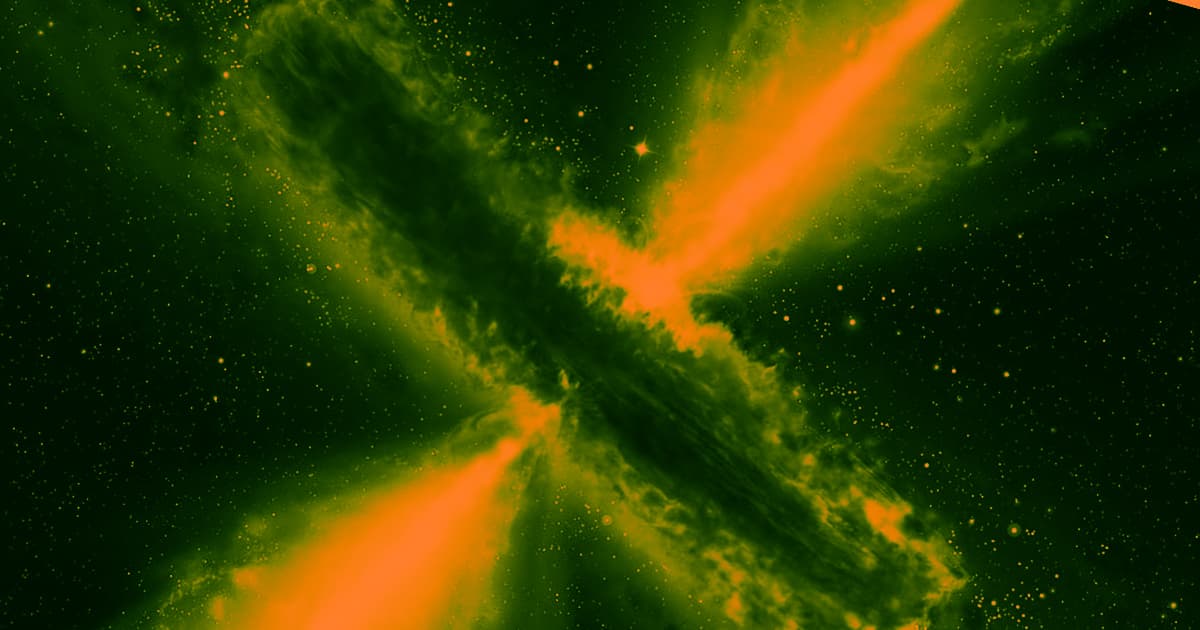New Discovery
The galactic nuclei known as quasars are unfathomably bright celestial objects powered by supermassive black holes. Now, astronomers using some of the most advanced terrestrial and space telescopes in existence think they've discovered the brightest quasar ever observed in the early universe — one that shines with the power of 600 trillion Suns.
"We don’t expect to find many quasars brighter than that in the whole observable universe," lead investigator Xiaohui Fan, a professor of astronomy at the University of Arizona, said in a news release.
Bright Boy
The new quasar is a distant 12.8 billion light-years away, and the team spotted it using equipment including the Keck Observatory, the James Clerk Maxwell Telescope, and the Hubble.
Fan and his collaborators were only able to detect the quasar, they said, because a galaxy came between it and the Earth — meaning that an effect called gravitational lensing could magnify its light substantially.
Phantom Quasar
The discovery of the quasar — which has the long-winded name J043947.08+163415.7 — isn't just notable because of its epic light projection.
It's also a big deal because it provides a window into how huge black holes affected star formation during the early universe. Additionally, it confirms a suspicion long held by astrophysicists and could help guide future research.
"This detection is a surprising and major discovery; for decades we thought that these lensed quasars in the early universe should be very common, but this is the first of its kind that we have found," said Fabio Pacucci, a postdoctoral associate at Yale University who helped discover the new quasar. "It gives us a clue on how to search for ‘phantom quasars’ — sources that are out there, but cannot be really detected yet."
READ MORE: Keck: Astronomers Uncover Brightest Quasar in Early Universe [Keck Observatory]
More on quasars: Meet One of the Most Powerful Quasars in the Known Universe
Editor’s Note 1/9 at 8:50 PM ET: This article has been updated to correct an error about how far away the quasar was located.
Share This Article
